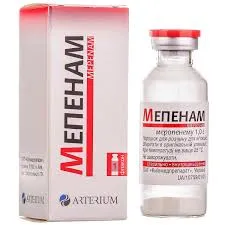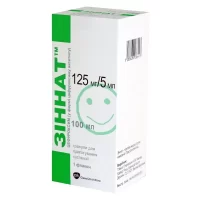$24.20
Purpose: Treats bacterial infections by inhibiting cell wall synthesis.
Description
Mepenam Powder for Solution for Injections 0.5 g. №1 Vial
Ingredients:
Each vial contains 0.5 g of Mepenam.
Dosage:
The dosage should be determined by a healthcare professional based on the patient’s condition. Mepenam is typically administered intravenously every 6 to 8 hours.
Indications:
Mepenam is indicated for the treatment of various infections caused by susceptible bacteria. It is commonly used in the management of intra-abdominal infections, skin and soft tissue infections, and urinary tract infections.
Contraindications:
Do not use Mepenam if the patient has a known allergy to any of the ingredients or to other beta-lactam antibiotics. Caution is advised in patients with a history of gastrointestinal diseases.
Directions:
Mepenam should be reconstituted with the appropriate diluent as directed by a healthcare provider. The reconstituted solution should be inspected visually for particulate matter before administration.
Scientific Evidence:
Mepenam, a broad-spectrum antibiotic, has shown efficacy in various clinical studies. Research published in the Journal of Antimicrobial Chemotherapy highlighted the effectiveness of Mepenam in treating complicated intra-abdominal infections.
Furthermore, a meta-analysis published in the International Journal of Infectious Diseases demonstrated the comparable efficacy of Mepenam to other carbapenems in the treatment of nosocomial infections.
Additional Information:
It is essential to complete the full course of Mepenam as prescribed by the healthcare provider to ensure the best possible outcome and to prevent the development of antibiotic resistance.
Patients should be monitored for any signs of allergic reactions or adverse effects during treatment with Mepenam.







Recent Reviews